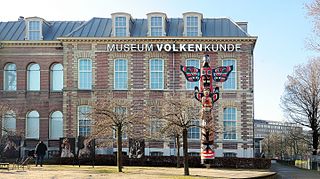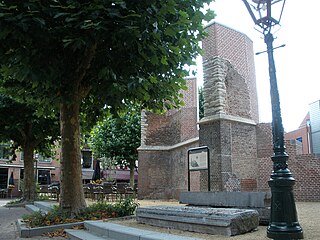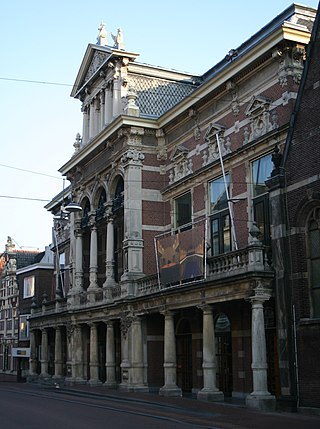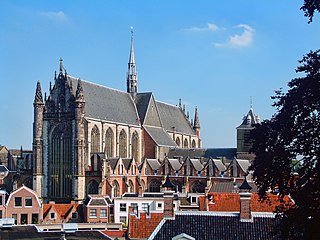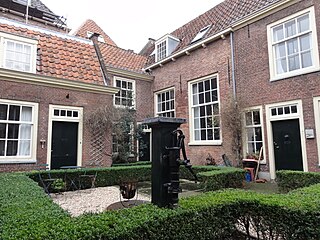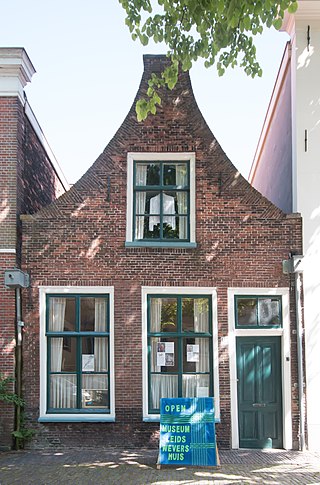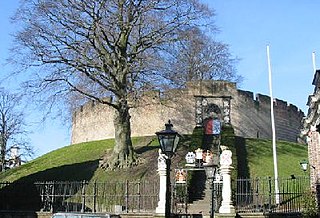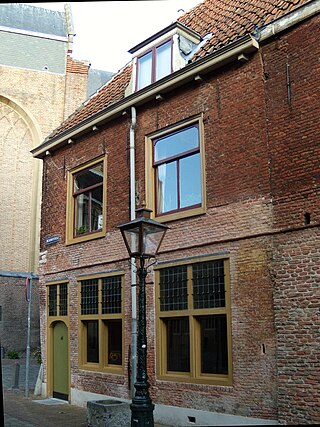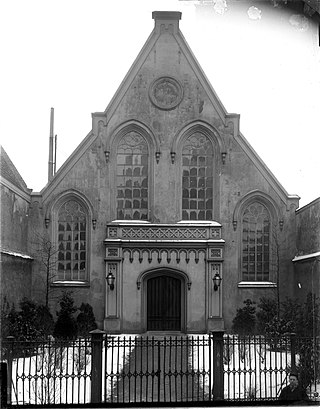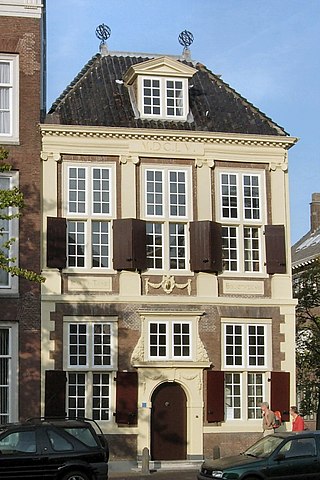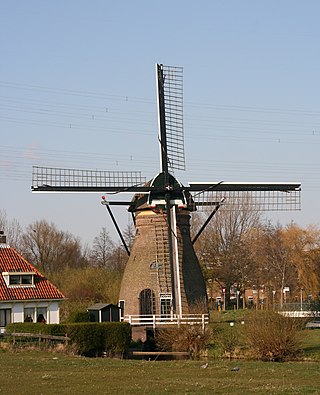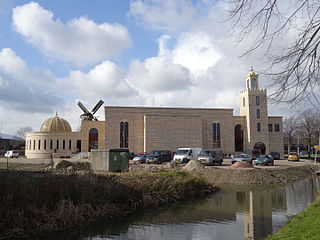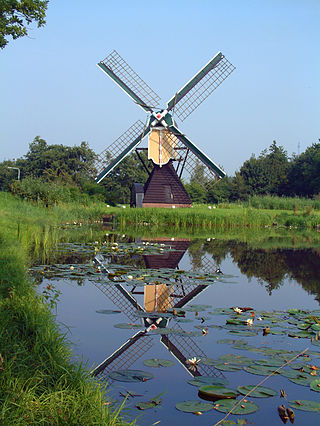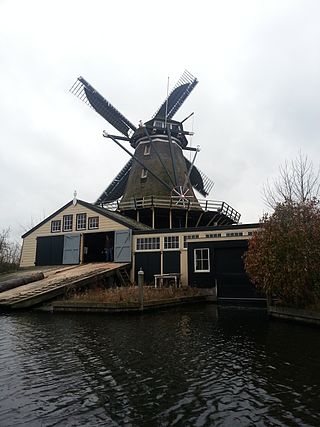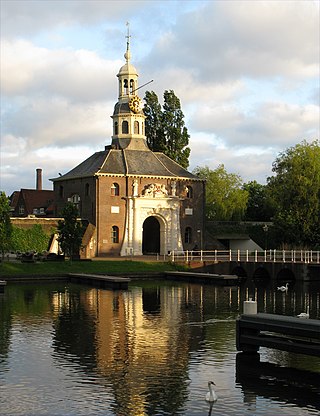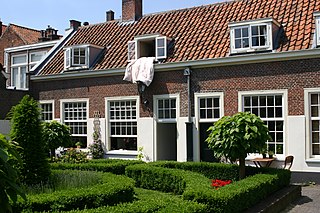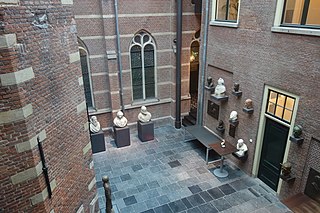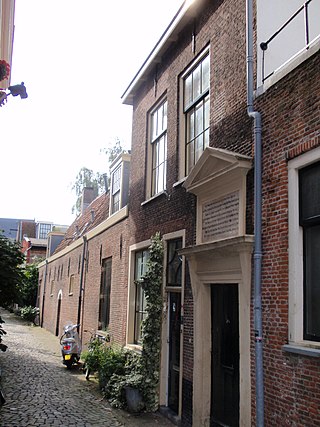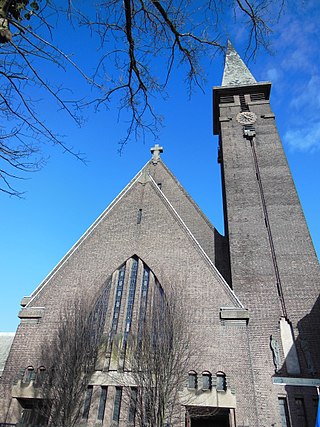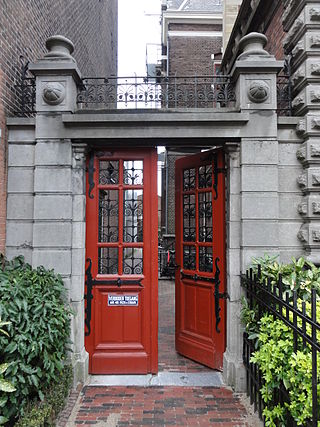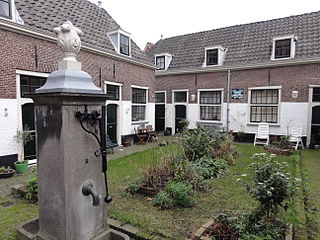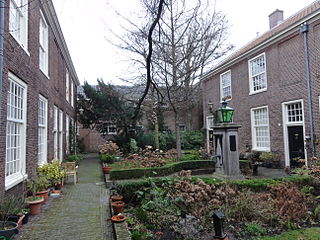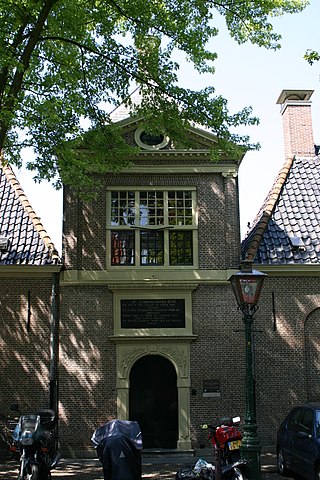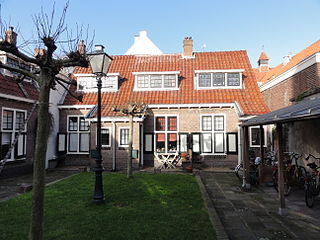46 Sights in Leiden, Netherlands (with Map and Images)
Legend
Premium Sights
Book tickets, guided tours and activities in Leiden.
Guided Free Walking Tours
Book free guided walking tours in Leiden.
Welcome to your journey through the most beautiful sights in Leiden, Netherlands! Whether you want to discover the city's historical treasures or experience its modern highlights, you'll find everything your heart desires here. Be inspired by our selection and plan your unforgettable adventure in Leiden. Dive into the diversity of this fascinating city and discover everything it has to offer.
Sightseeing Tours in LeidenActivities in Leiden1. Saint Peter Catholic Church
St. Peter's Church, usually referred to simply as St. Peter's Church, is a church building on the Lammenschansweg in the Dutch city of Leiden, dedicated to the apostle Peter and part of the Roman Catholic HH. Peter and Paul parish in Leiden and surroundings.
2. Rijksmuseum Boerhaave
Rijksmuseum Boerhaave is a museum of the history of science and medicine, based in Leiden, Netherlands. The museum hosts a collection of historical scientific instruments from all disciplines, but mainly from medicine, physics, and astronomy.
3. Wereldmuseum Leiden
Wereldmuseum Leiden, is a Rijksmuseum in the Netherlands located in the university city of Leiden. As of 2014, the museum, along with Wereldmuseum Amsterdam, in Amsterdam, and Wereldmuseum Rotterdam, together make up the National Museum of World Cultures.
Wikipedia: National Museum of Ethnology (Netherlands) (EN), Website
4. Hartebrugkerk
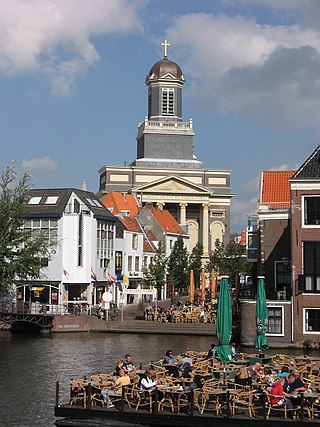
The Hartebrugkerk is a church in the Dutch city of Leiden. The church is part of the Parish of Saints Peter and Paul. The official name is Our Lady Immaculate Conception. The church is named after the bridge of the same name in front of it at the time. Among the people of Leiden, the church is also known as the Coeliekerk, after the last word of the Latin proverb above the entrance, Hic Domus Dei est et Porta Coeli.
5. Vrouwekerk
The Vrouwekerk or Vrouwenkerk, originally known as the Onze-Lieve-Vrouwekerk, was a 14th-century church in the Dutch city of Leiden. In the early 17th century, the church was attended by the Pilgrims as well as by the first colonists to settle on Manhattan.
6. Rijksmuseum van Oudheden
The Rijksmuseum van Oudheden is the national archaeological museum of the Netherlands, located in Leiden. It grew out of the collection of Leiden University and still closely co-operates with its Faculty of Archaeology. The museum calls itself "the national centre for archaeology" and focuses on ancient Egypt, the ancient Near East, the classical world of Greece, Etruria and Rome and the early Netherlands.
7. City Concert Hall Leiden
The Stadsgehoorzaal is a concert hall on the Breestraat in the Dutch city of Leiden. In addition to the Great Hall, the building includes a chamber music hall, the Aalmarkt Hall and a historic hall on the Breestraat, the Breezaal.
8. Meermansburg
The Meermansburg on the Oude Singel / Oude Vest is the largest court in the Dutch city of Leiden. It was founded in 1680 by Maerten Meerman and his wife Helena Verburgh. The name is a contraction of the surnames of the founders.
9. Pieterskerk
The Pieterskerk is a late-Gothic Dutch Protestant church in Leiden dedicated to Saint Peter. It is known today as the church of the Pilgrim Fathers, where the pastor John Robinson was buried. It is also the burial place of the scientist Willebrord Snellius.
10. Hooglandse Kerk
The Hooglandse Kerk is a Gothic church in Leiden. Its earliest parts date back to the last quarter of the fourteenth century. Most of the current structure dates from the fifteenth century. The brick church was dedicated to St. Pancras and today serves parishioners of the Protestant Church in the Netherlands.
11. De Heesterboom
d'Heesterboom, also known as De Heesterboom, is a sawmill in the Dutch city of Leiden. It belongs to the Top 100 of the National Service for the Preservation of Monuments. The mill is located at the Noordman timber merchant on the Haagweg on a plot on the Oude Rijn/Galgewater. The mill has three saw frames. The middle window consists of a saw and scalloped window.
12. Jean Michelshofje
The Jean Michelhof, also known as Jan Michielshof, is one of the 35 courtyards of the Dutch city of Leiden. The courtyard is located in the Pieterswijk right opposite the Lokhorst Church in the Pieterskerkstraat 10-12. The courtyard was founded in 1687 by Catharina Geschier, widow of Jan Michielsz.
13. Het Leids Wevershuis
Museum Het Leids Wevershuis consists of one of the last remaining "weavers' homes" in Leiden, Netherlands. Built around 1560, the exterior, the large antique loom (1830) and the interior, are testimony of the once flourishing textile industry around Leiden, in particular during the 16th and 17th century, when many home weavers supplied the draper's guild with high quality woolen cloth.
14. De Burcht
The Burcht van Leiden is an old shell keep in Leiden constructed in the 11th century. It is located at the spot where two tributaries of the Rhine come together, the Oude Rijn and the Nieuwe Rijn. The structure is on top of a motte, and is today a public park.
15. Leiden American Pilgrim Museum
The Leiden American Pilgrim Museum is a small museum in the Dutch city of Leiden dedicated to the Pilgrim Fathers who sailed to the New World on the Mayflower. These Puritan separatists were religious refugees who had fled England to Amsterdam in 1608 and moved to Leiden the next year. They lived and worked in that city for about 12 to 20 years. In 1620, they left Leiden by canal, going to Delfshaven where they embarked on the Speedwell, which took them to Southampton. But the Speedwell proved leaky and had to be sold, so they transferred to the Mayflower and undertook the famous voyage to New England. The colonists' first harvest festival after their arrival at Plymouth Colony was the origin of the annual Thanksgiving celebration in the United States.
16. Museum De Lakenhal
Museum De Lakenhal is the city museum of fine art and history in Leiden, Netherlands. Founded in 1874, its collection ranges from early works by Rembrandt van Rijn and Lucas van Leyden's Last Judgement to modern classics of De Stijl and artworks created by contemporary artists such as Claudy Jongstra, Atelier van Lieshout. One notable collection is that of fijnschilder paintings from the Dutch Golden Age. Besides its permanent collection, the museum runs temporary exhibitions and public events.
17. Evangelisch Lutherse kerk
Evangelical Lutheran Church is a church in the Dutch city of Leiden. The church is located at Hooglandse Kerkgracht 26. The building dates from 1618, making it the oldest church building built for Protestant service in the city.
18. Kasteel Cronesteyn
Cronesteyn Castle was a castle southeast of Leiden in Zoeterwoude, on the east side of the Roomburger Watering near Lammen. The castle was built around 1300 as a fortified farm. Nowadays it is located in the public polder park Cronesteyn and only the moat around the courtyard can be seen.
19. Morspoort
The Morspoort is the western city gate of Leiden, South Holland, Netherlands, located on the Morssingel. The stone gate was built in 1669 in Mannerist style according to a design by the Leiden master builder Willem van der Helm.
20. Bibliotheca Thysiana
The Bibliotheca Thysiana was erected in 1655 to house the book collection of the lawyer Johannes Thysius (1621–1653). Upon his early death, he left a legacy of 20,000 guilders for the building of a public library with a custodian's dwelling. Designed by the architect Arent van ‘s-Gravensande, the building follows the Dutch Classical style and is regarded as one of the jewels of Dutch 17th-century architecture. Bibliotheca Thysiana is one of the Top 100 Dutch heritage sites. It is distinguished by its balanced proportions and the purity of its Ionic order on top of a high basement.
21. Stadsmolen
The Stadsmolen or Stadspoldermolen in the Dutch city of Leiden is a polder mill built in 1856 to replace an earlier mill from 1806. The strongly bottle-shaped masonry mill was in operation until 1966. In 1979 the mill was restored, where the hull turned out to be torn in various places. It was then decided to demolish the City Mill to the ground and rebuild it. The mill is located on the Slaaghsloot, a ditch that was popularly called "Stinksloot", because carcasses were buried next to it. The miller's house next to the Stadsmolen was built because it smelled too bad in the mill to live there.
22. Moskee Al Hijra
The Al Hijra mosque is a mosque in the Dutch city of Leiden, which has been located at Rembrandtstraat 10 since about 1982. Because the building became too small for the Moroccan religious community, a new building was put into use on the Ter Haarkade in 2018. The name Al Hijra or Al Hijra refers to the migration of Muhammad and his followers from Mecca to Medina in 622.
23. Gijselaarsbank
The Gijselaarsbank is a symmetrical bench at the head of the Rapenburg in Leiden. The bench dates from 1920 and was built in honour of Nicolaas Charles de Gijselaar, who was mayor of Leiden between 1910 and 1927. During the First World War (1914-1918) he tried to reduce shortages of food, clothing and fuel and to distribute these goods fairly.
24. Maredijkmolen
The Maredijkmolen is a windmill on the Groene Maredijk in the Dutch city of Leiden. The mill dates from 1735 and was built for the drainage of the Maredijkpolder. This makes it the oldest surviving windmill in Leiden. The mill is owned by the municipality of Leiden. The mill, which was last restored in 2006, runs regularly and can usually be visited at those times.
25. De Herder
De Herder is a sawmill in the Dutch city of Leiden. The mill dates from 1884 and was built for the sawmill there. It replaced an earlier paltrokmolen, which had been struck by lightning. The mill was not new: it had previously stood as "De Kat" in Amsterdam as a sawmill. De Herder sawed on wind power until 1926; After that, decay set in. During the Second World War, sawing was done again on wind power from 1941 onwards, but using the now built-in fast sawing machine that was driven by the wind with the help of transmission belts, instead of the electric motor that was installed in 1926. The original vertical saw frames have been removed.
26. Sint Annahof of Joostenpoort
The Sint Annahof or Joostenpoort is a courtyard on the Zegersteeg in the city center of the Dutch city of Leiden. The courtyard also has a (nicer) gate at the end of the Doelengracht, which is referred to there as the 5th Binnenvestgracht.
27. Zijlpoort
Zijlpoort is a city gate in Leiden, The Netherlands. The gate was built in 1667 in the classical style according to a design by the Leiden architect Willem van der Helm and with sculpture by Rombout Verhulst. Because the gates have to connect with the city wall as well as with a bridge, the building is in the form of a parallelogram. The Zijlpoort, together with the Morspoort (1669) and Doelenpoort (1645), are the only of the original eight gates that survived. The name refers to the nearby river, the Zijl. The predecessor of the Zijlpoort stood at the end of the Haarlemmerstraat that is now called the Havenplein.
28. Lokhorstkerk
The Lokhorst Church is a religious building in the Pieterswijk in the inner city of Leiden in the Dutch province of South Holland. The combined Mennonite and Remonstrant congregations hold their worship services there. It is a national monument.
29. Samuel de Zee's hofje
Samuel de Zee's hof is a courtyard in the Dutch city of Leiden. The courtyard was founded in 1723 for destitute family members. The complex consists of 21 houses and is located on the Samuel de Zee's court. The entrance to the courtyard is located on the Doezastraat between house numbers 14 and 18 and contains the text: "Does god only give the honor for good dognie rich neeven ende nigten did Samuel de Zee dit bij sijn leeven stigten, 1723". After the entrance there is a gate with the text: "So was my sin: A yder talks after his understanding ~ but so it is not to your pleasure blyft then buyten k can with my gate not sluyten your mouth 1723 ~".
30. Tevelingshofje
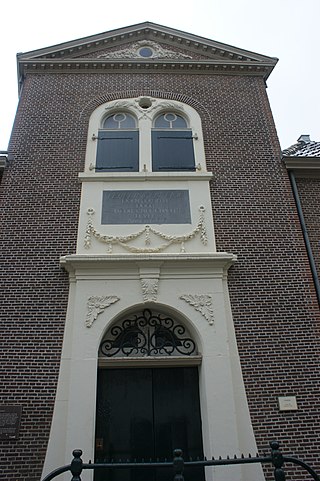
The Tevelingshofje is a courtyard in the Dutch city of Leiden, in the province of South Holland. The courtyard is located on the filled-in 4e Binnenvestgracht. The Tevelingshofje was founded in 1655 and built in 1666, commissioned by the Leiden merchants Jacob and Charles Tevel. During the plague epidemic of 1655, Charles Tevel had it recorded in his will that after his death, Jacob had to build a courtyard with 12 houses for childless couples over the age of 20. Jacob and his wife later had this expanded to twenty houses.
31. Groot Sionshof
The Groot Sionshof, or van Swietenhof, is a courtyard on the Sionsteeg in the city center of the Dutch city of Leiden. It was founded in 1480 by Hugo van Zwieten and Luydgaert Claesdochter van Bosschuyzen. In terms of foundation, it is the second oldest surviving courtyard in Leiden, but it is no longer on its original site: it was moved from the Papengracht to the Sionsteeg in 1668 due to dilapidatedness.
32. Groeneveld
The Groeneveld Foundation is one of the youngest courtyards in the Dutch city of Leiden. The courtyard is located on the Oude Vest near the Leidse Schouwburg. The courtyard was founded in 1878 by Eduard Cornelis Groeneveld and built in 1882.
33. Sint Janshofje
The Sint Janshof is a courtyard in the Dutch city of Leiden, in the province of South Holland. The courtyard is located on the Haarlemmerstraat. The Sint Janshof was founded in 1504 by order of Jan Stoop Kerstiaanszoon and his wife Claertgen. The courtyard was intended for decent people, who had fallen to the lower shore due to setbacks. The courtyard consisted of seven houses for single women, six for married couples, a regent's room and a house that could be rented out for the benefit of the courtyard. In 1565, the heirs of the founders transferred the courtyard to Mr. Geraert van der Laen, who in the same year ordered the new construction of the houses, the gatehouse and the regent's room. After his sudden death, the name of the courtyard was changed to the Sint Jans- or Van der Laenhofje.
34. Sieboldhuis
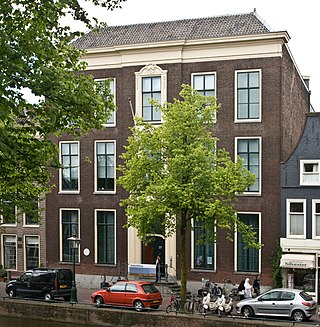
Japan Museum SieboldHuis is a museum located at the Rapenburg (Leiden) in Leiden, Netherlands. It displays items that were collected by Philipp Franz von Siebold (1796-1866) between 1823 and 1829 during his stay at Dejima, the Dutch trade colony nearby Nagasaki in Japan. It also functions as a museum of Japanese culture.
35. Academisch Historisch Museum
The Academic Historical Museum (AHM) is a museum in the Dutch city of Leiden, in the province of South Holland. The museum, which is housed in the Academy Building, displays objects, photographs and documentation about the history of Leiden University and student life. The museum has permanent and temporary exhibitions. The permanent exhibition includes twenty sculptures by Leiden professors. There are several smaller exhibitions throughout the Academy Building. Also special are the entrance to the Academy Building (1828), the vault room (1581) and the Great Auditorium (1581) that was used for the theology colleges. In 1865 Victor de Stuers made a number of special charcoal drawings in the stair tower and at the entrance to the sweat room. In 2009, student Uri Ruff painted a mural depicting modern student life. The temporary exhibition is housed in the reception area, among other places.
36. Klein Sionshofje of Weduwenhofje
Klein Sionshof is a courtyard at Schoolsteeg 1-5 in the Dutch city of Leiden, in the province of South Holland. The courtyard has a sandstone gate, which is crowned by a pediment with an inscription about the foundation.
37. Bethlehemshof
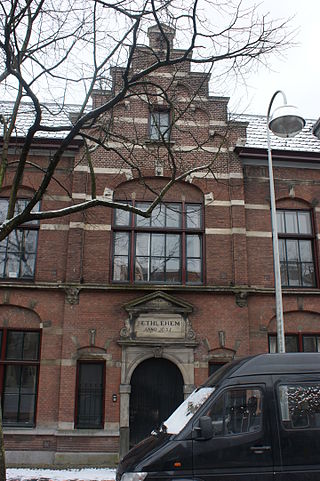
Bethlehemshof is a courtyard on the Levendaal in the Dutch city of Leiden. It was founded in 1630 by the Leiden merchant Gerrit Frankens van Hoogmade, who also chose the name of the courtyard. In 1701, the Mennonites of this courtyard joined the De Houcksteen courtyard located on the Levendaal, but the administration remained separate. In 1811, for financial reasons, both courtyards were merged under the name Bethlehem. In 1897, the part on the Levendaal was provided with a contemporary façade with an upper floor. In 1978 the courtyard was restored.
38. Sint-Josephkerk
St. Joseph Church is the largest Roman Catholic parish church still in use in Leiden in the diocese of Rotterdam. It is also called the Herensingelkerk, because it is situated at the street called Herensingel. The church is a national heritage site and one of the tallest buildings in the centre of Leiden.
39. Paviljoenshof
The Paviljoenshof is a complex of houses in the Dutch city of Leiden. The courtyard can be reached through a gate between the Villa de Kroon, named after the client Arnold Kroon, and café Eigenzorg on the Stationsweg. The complex consists of 33 contiguous courtyard houses spread over 4 rows with a communal courtyard garden.
40. Jeruzalemshof
The Jerusalemhof is a courtyard on the former Cellebroersgracht, which has been the Kaiserstraat since it was filled in 1875, in the city center of the Dutch city of Leiden. It is the oldest surviving courtyard in Leiden. It was founded on 16 May 1467 by Wouter IJsbrandszoon in honour of God and the twelve apostles on the occasion of his visit to the Holy Sepulchre in Jerusalem. Originally, the courtyard consisted of 13 houses that were intended for thirteen poor men, who are honorable, and of good syn façade. A possible wife was also allowed to live with her, because then she could take care of her husband. When her husband died, she had to leave. The fact that a courtyard was intended for men and not for women was remarkable, because that had never happened before in the Netherlands.
41. François Houttijnshof
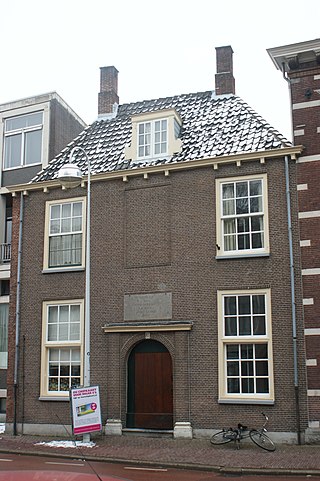
François Houttijnshof is a courtyard in the Dutch city of Leiden. The courtyard is located at Hooigracht 81 and contains 9 houses. In 1736 it was decided to found the courtyard, which was completed a year later. It has a sober entrance and a stone with the inscription 1737.
42. Sint Elisabethgasthuishof
The Sint Elisabeth Gasthuishof is a courtyard on the Caeciliastraat/Oude Vest in the Dutch city of Leiden. The courtyard consists of twelve houses from the second quarter of the 17th century. Entrance to the courtyard is a striking gate with sandstone frame. The court is located in the former St. Elisabeth Gasthuis.
43. Schachtenhofje
The Schachtenhof is a courtyard in the Dutch city of Leiden, in the province of South Holland. The courtyard is located on the Middelstegracht. The Schachtenhof was founded in 1664 in the name of the orphan boy Theunis Jacobsz. Van der Schacht. His will stated that a courtyard with 12 houses had to be built on the Midden Gracht. He demanded that residents of 40 years and older could live there for free and there was a preference for family members of Van der Schacht and residents who, like Van de Schacht, had grown up in the Orphanage of Leiden.
44. Coninckshofje
The Coninckshof is one of the courtyards of the Dutch city of Leiden. The courtyard is located at Oude Vest 15. The courtyard was founded in 1773 and consecrated in 1777 by Cecilia Coninck. It stands partly on the ground of the former Saint Ursula monastery. Originally, the courtyard had six houses, but it was later expanded to seven houses. In 1861, four more houses were added. The courtyard is a national monument and has been registered in the monument register since 1968. The courtyard has a gatehouse, bluestone pump and regent's room.
45. Pieter Loridanshofje
Pieter Loridanshof is a courtyard in the Dutch city of Leiden, at Oude Varkenmarkt 1. The courtyard was founded in 1655 by Pieter Loridan and consists of an entrance pavilion with regent's room and 12 houses. In 1950 the folding house was restored. Since 1968 it has had the status of national monument.
46. Barend van Namenhofje
Barend van Namenhof is a courtyard at Hoefstraat 12 in the Dutch city of Leiden. The courtyard was founded in 1730 by merchant Barend van Namen for Reformed childless couples over fifty. The courtyard consists of 12 houses. Three courtyard houses were designed by W.C. Mulder. The court was rebuilt in 1788. In 1915 it was completely renovated at the expense of regent C.W.J.W. Pape. This gave it its rich, distinguished impression, which is why it was also called "villahof". The courtyard has a regent's room and has the status of a national monument.
Share
Disclaimer Please be aware of your surroundings and do not enter private property. We are not liable for any damages that occur during the tours.


